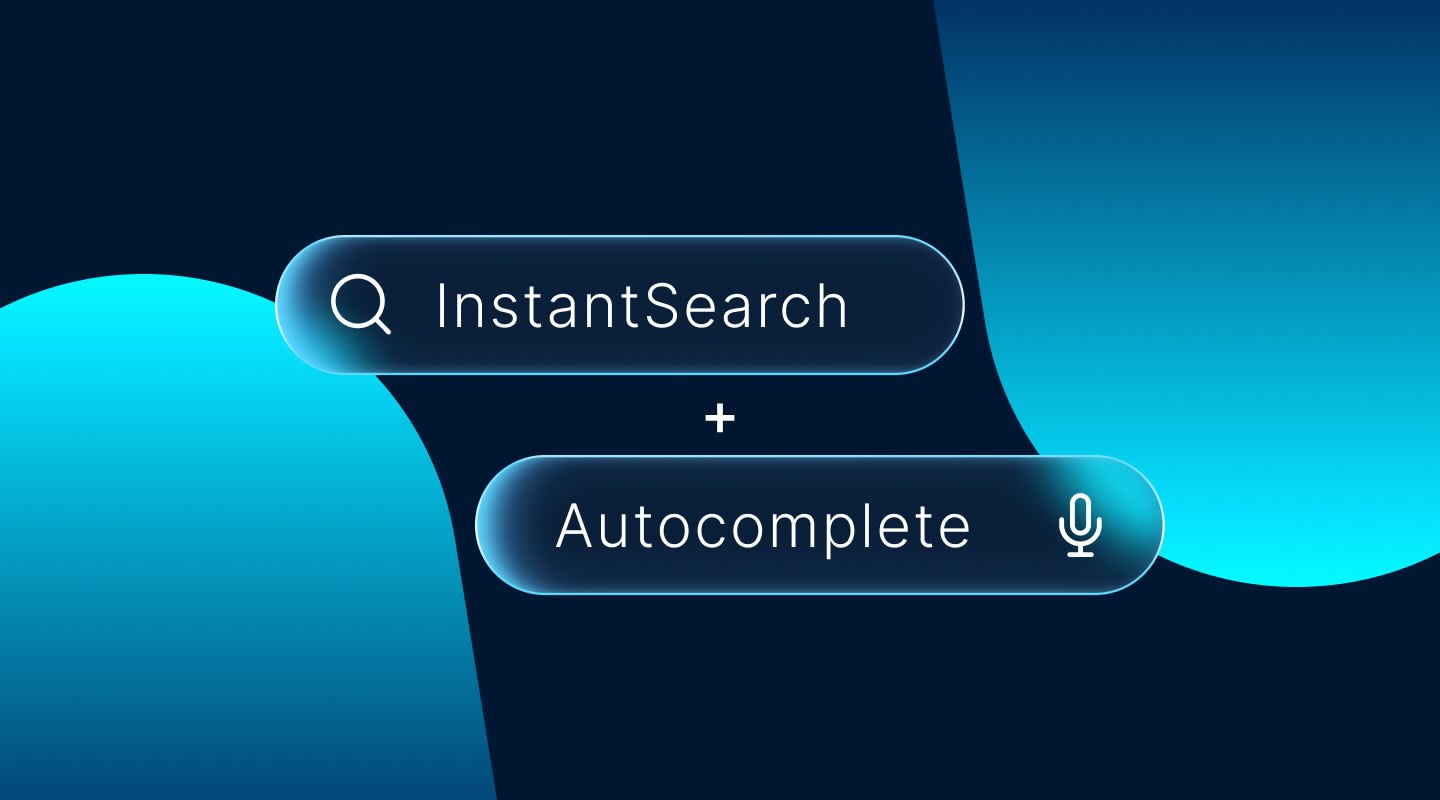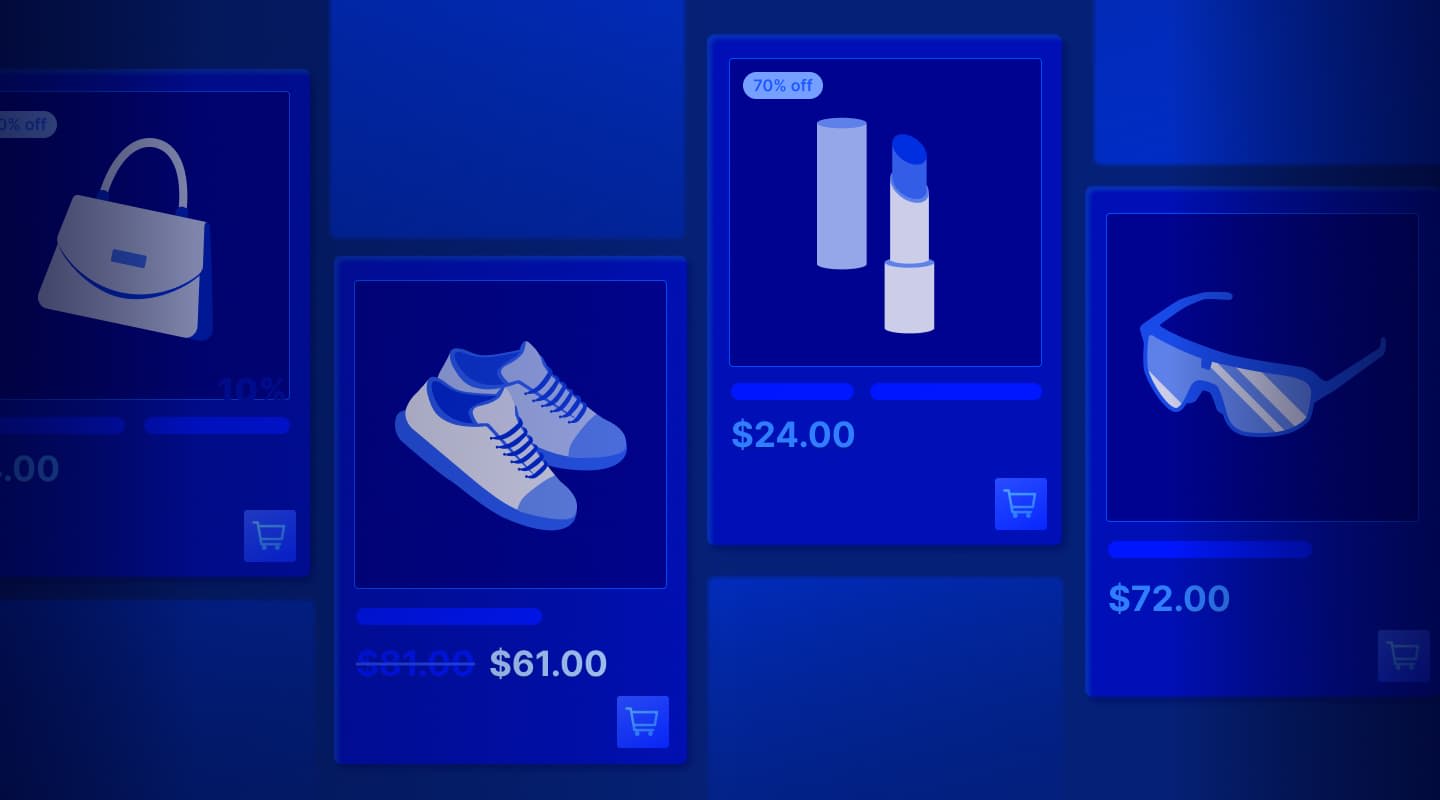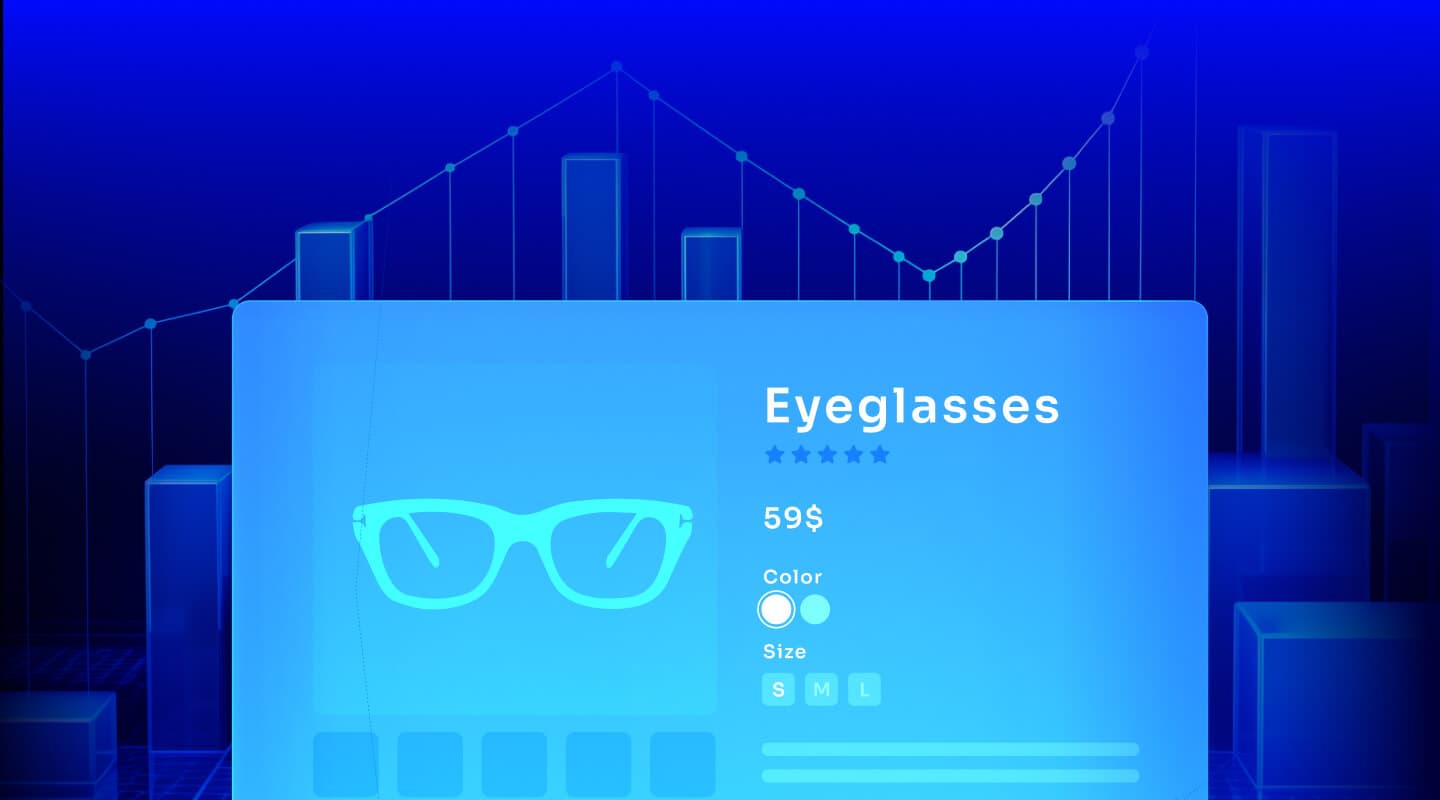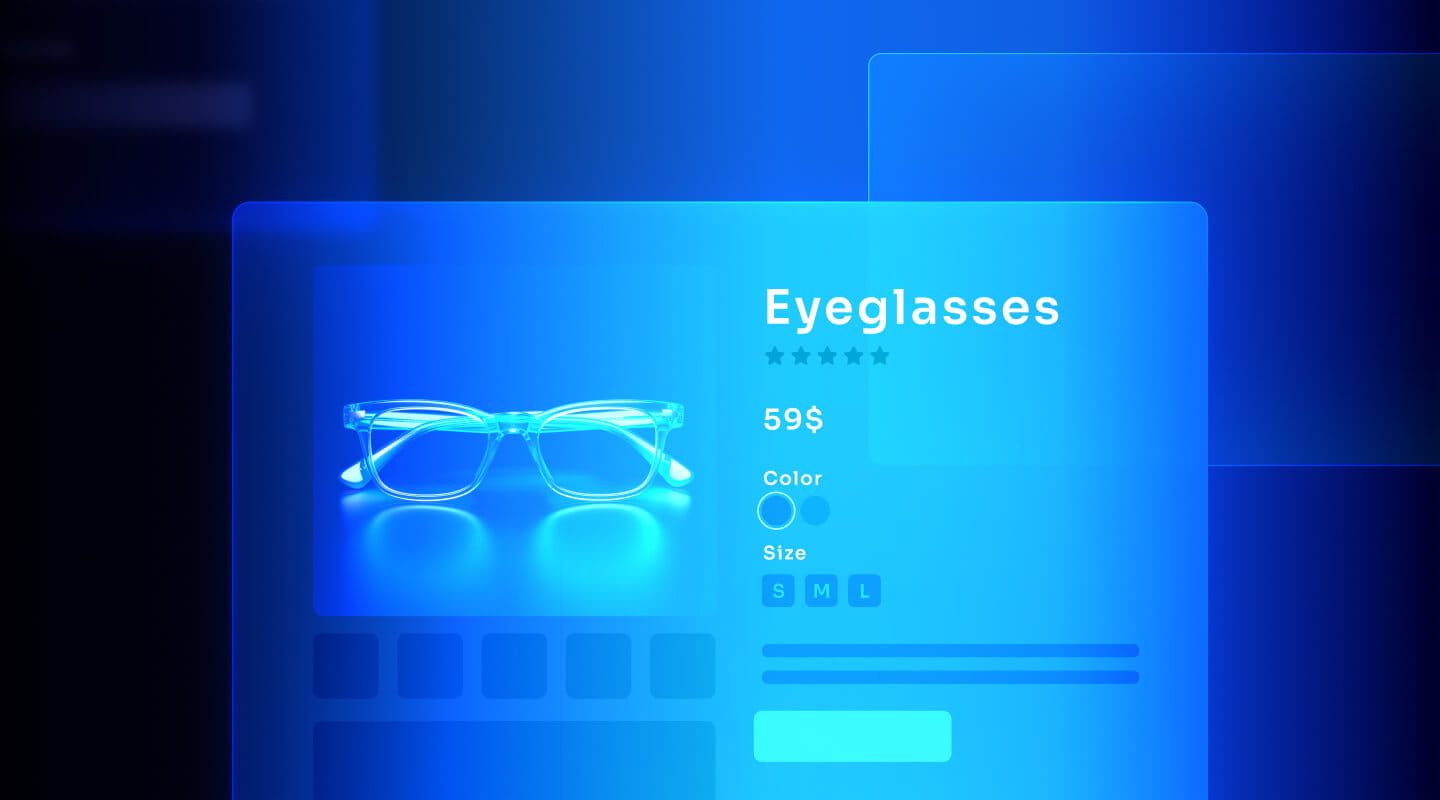Add InstantSearch and Autocomplete to your search experience in just 5 minutes
A good starting point for building a comprehensive search experience is a straightforward app template. When crafting your application’s ...
Senior Product Manager

A good starting point for building a comprehensive search experience is a straightforward app template. When crafting your application’s ...
Senior Product Manager

The inviting ecommerce website template that balances bright colors with plenty of white space. The stylized fonts for the headers ...
Search and Discovery writer

Imagine an online shopping experience designed to reflect your unique consumer needs and preferences — a digital world shaped completely around ...
Senior Digital Marketing Manager, SEO

Winter is here for those in the northern hemisphere, with thoughts drifting toward cozy blankets and mulled wine. But before ...
Sr. Developer Relations Engineer

What if there were a way to persuade shoppers who find your ecommerce site, ultimately making it to a product ...
Senior Digital Marketing Manager, SEO

This year a bunch of our engineers from our Sydney office attended GopherCon AU at University of Technology, Sydney, in ...
David Howden &
James Kozianski

Second only to personalization, conversational commerce has been a hot topic of conversation (pun intended) amongst retailers for the better ...
Principal, Klein4Retail

Algolia’s Recommend complements site search and discovery. As customers browse or search your site, dynamic recommendations encourage customers to ...
Frontend Engineer

Winter is coming, along with a bunch of houseguests. You want to replace your battered old sofa — after all, the ...
Search and Discovery writer

Search is a very complex problem Search is a complex problem that is hard to customize to a particular use ...
Co-founder & former CTO at Algolia

2%. That’s the average conversion rate for an online store. Unless you’re performing at Amazon’s promoted products ...
Senior Digital Marketing Manager, SEO

What’s a vector database? And how different is it than a regular-old traditional relational database? If you’re ...
Search and Discovery writer

How do you measure the success of a new feature? How do you test the impact? There are different ways ...
Senior Software Engineer

Algolia's advanced search capabilities pair seamlessly with iOS or Android Apps when using FlutterFlow. App development and search design ...
Sr. Developer Relations Engineer

In the midst of the Black Friday shopping frenzy, Algolia soared to new heights, setting new records and delivering an ...
Chief Executive Officer and Board Member at Algolia

When was your last online shopping trip, and how did it go? For consumers, it’s becoming arguably tougher to ...
Senior Digital Marketing Manager, SEO

Have you put your blood, sweat, and tears into perfecting your online store, only to see your conversion rates stuck ...
Senior Digital Marketing Manager, SEO

“Hello, how can I help you today?” This has to be the most tired, but nevertheless tried-and-true ...
Search and Discovery writer
Search is a topic media companies often overlook. Most of us associate the word search with search engines like Google/Bing/DuckDuckGo. These organic channels are often how visitors (and at times internal team members), will search a content catalog. But it’s time to give some serious thought to your internal, on-page site search functionality and experience.
There are many reasons to optimize internal search experience such as:
The good news is that creating an optimized site search experience for a Media site or app may be easier than you think.
Your goal may be for users to consume content. However, before building the ideal path to that content, you must clarify user intent:
Each user’s intent(s) are solved with different discovery patterns: search, guided discovery, or recommendations. It’s critical that you identify what specific intent and motivations are behind all user searches. Make sure that you spend time mapping this out, to then serve each user individually.
These types of questions will help you to define priorities for your discovery strategy.
On top of that, the quality of your metadata (date of publication, theme, topic, etc.) is crucial to ensure a good user experience. Be clear on the attributes that will determine how your content ranks when queried. Think about what uniquely differentiates your content catalog such as freshness, particular niches, short or snappy content, exclusivity, etc.
In order to build a great search and discovery experience, you need to be clear on your priorities and key metrics. Perhaps that’s to increase time spent, increasing engagement to support an ads-based model. Or it might be to increase premium subscriptions.
It’s not uncommon for media companies to run on several business models: ad-based, subscription-based, and even ecommerce. Also, priorities, goals, and primary metrics may shift and change over time. Common video industry on-demand models include AVOD (advertising-based video on-demand), SVOD (subscription video-on-demand), and TVOD (transactional video on-demand). Identifying your primary model(s) and goal(s) is critical to building great user experiences to achieve those goals.
To achieve your goals, consider:
After identifying your goals and core metrics, you should then build a discovery map that reflects your objectives and specific needs. Here is a template and example to use.
| Content type 1 | Content type 2 | Content type 3 | |
| User intent A | Discovery scenario =
|
Discovery scenario =
|
Discovery scenario =
|
| User intent B | |||
| User intent C |
Next, audit your existing setup. Starting by evaluating your various discovery scenarios and note their pros and cons.
Below are examples of other items to evaluate throughout your audit. How do you manage:
There are many more. Remember: The better you analyze your existing search & discovery shortcomings and opportunities, the better you can move faster on optimizing them.
Curation strategies vary a lot across the media industry. While publishers often rely heavily on editorial teams, video platforms are often algorithmically curated. There is no right or wrong way to do this; finding your balance is key.
AI, for example, can be a way to surface what you have outlined in your content discovery map. Among the discovery scenarios that you have considered, think about how AI can help augment your team’s work. It can bridge gaps or free up editorial time. Finding this balance allows for increased efficiency and a focus on quality.
There are many different ways to leverage AI, here are a few. It can:
After following the tips outlined throughout this, you will be in a better position to select the right solution for your business and team. Whether your implementation will consist of building your own search and recommendation engine, or whether it will consist of building from external platforms that are made for developers, or perhaps you’ll buy off-the-shelf site search solutions.
In making these decisions, here are a few more considerations that are important at that stage.
Our hope is that these tips will help you create the most optimized experiences for both your customers and your teams. Best of luck in planning, auditing, and creating your unique search and discovery experience. It’s worth it because effective search and discovery will help engage your site visitors and convert them into fans for the long-term.
If you’d like to learn more about building out the best possible search, discovery and recommendation experience tailored to your unique audience and situation, as always, you can reach out to our team of experts. We’d be more than happy to have a chat.
Powered by Algolia Recommend